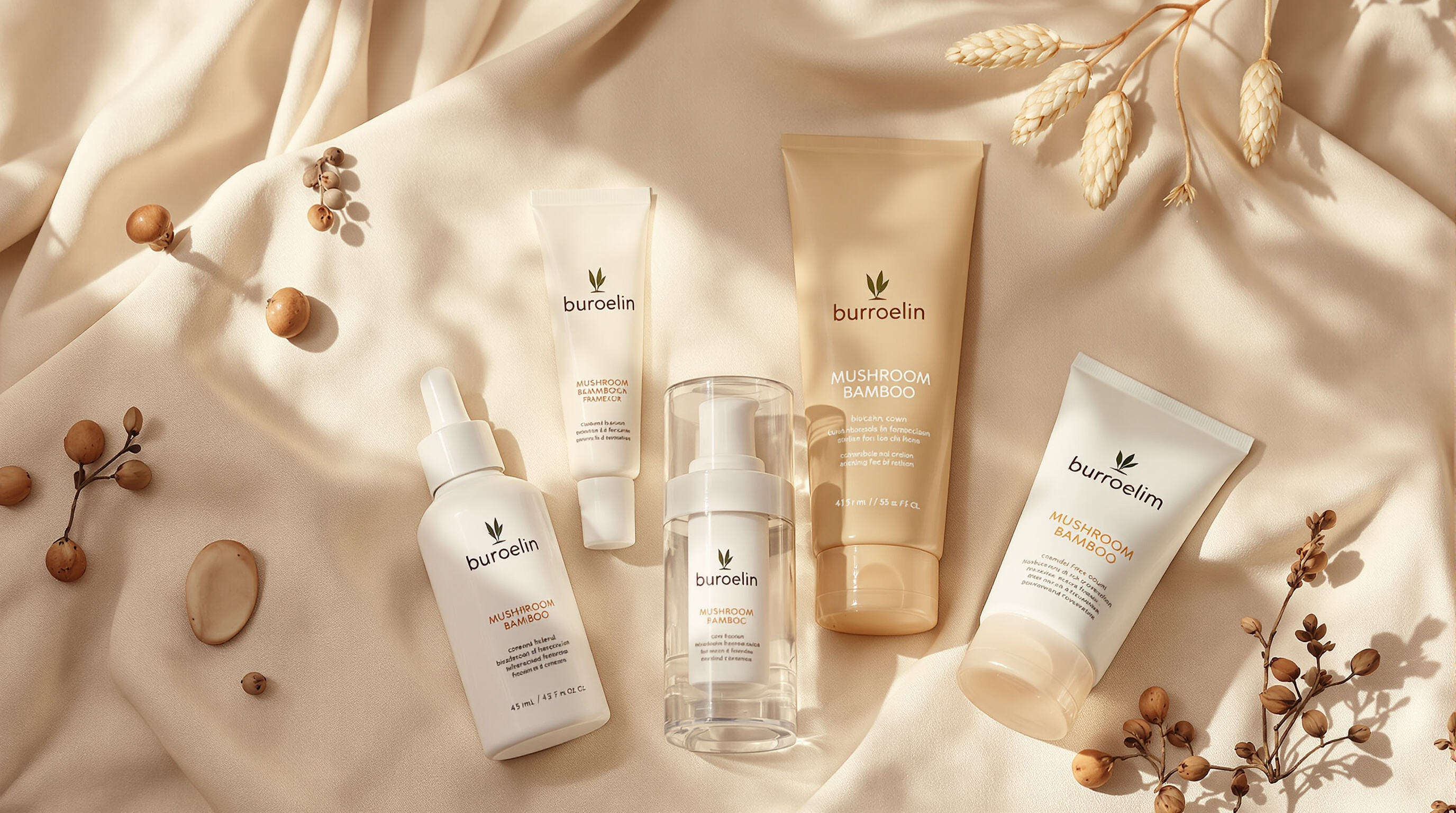The Clean Beauty Movement and Its Demand for Sustainable Packaging
Defining Clean Beauty in the Context of Sustainable Packaging
The clean beauty trend isn't just about avoiding harmful chemicals anymore. It's also about how products come packaged these days. Many companies are now focusing on containers that don't damage the planet when they're tossed away. Glass jars, metal tins, and those new plant based plastic options have become popular choices among eco conscious brands. These materials fit right in with what makes clean beauty special in the first place safety for skin and planet alike. Most green beauty lines steer clear of those one time use plastic bottles we all know end up in landfills somewhere. Instead they go for things that can actually be recycled properly or break down naturally over time. The idea is simple really the packaging should match the clean ingredients inside it after all.
How Clean Beauty Trends Are Reshaping Consumer Expectations
Modern day shoppers are really pushing for openness and responsibility when it comes to their purchases. According to Happi's 2025 report, around two thirds of people buying beauty products actually put sustainability right at the top of their list when deciding what to buy. Because of this growing concern, companies across the industry have started incorporating green initiatives throughout their operations, whether they're sourcing ingredients or designing product containers. Market experts are seeing big changes ahead too. They estimate that the worldwide market for cosmetic packaging could jump from roughly 47.3 billion dollars back in 2024 all the way up to about 61.9 billion by the end of the decade. Most of this growth seems to be fueled by brands switching over to materials that are better for the environment.
The Link Between Product Purity and Eco-Friendly Materials in Beauty Packaging
Clean beauty fans absolutely refuse to use packaging that might release toxic substances into their products. These environmentally aware consumers prefer materials such as PCR plastics made from previously used items or biodegradable options derived from mushrooms. Such choices cut down on trash and keep the products safe from degradation over time. Take airless glass containers for instance they stop bacteria from getting in and can be recycled endlessly. This combination of safety and sustainability really appeals to people who care deeply about environmental impact when making purchasing decisions.
Why Packaging Is a Core Extension of Clean Beauty Brand Values
Sustainable packaging isn’t an afterthought—it’s a pillar of brand identity. Companies that prioritize recycled or refillable containers report 23% higher customer loyalty compared to conventional brands (Happi 2025). By aligning packaging choices with environmental ethics, clean beauty brands foster trust and differentiate themselves in a saturated market.
Environmental Impact of Traditional Cosmetic Packaging and Industry Challenges
Statistics on Plastic Waste from Beauty Products Annually
Beauty products come wrapped in all sorts of containers, and we're talking about a massive problem here. The industry churns out around 120 billion packaging items every year, most of which get tossed after just one use according to SPNews reports. Plastic is definitely the main culprit in this mess. About seven out of ten plastic packages end up sitting in landfills instead of being reused. Only about nine percent actually makes it into recycling bins, mostly because different materials don't play well together or simply aren't collected properly. Looking at these numbers shows there's clearly something wrong with how people dispose of their cosmetics versus what our recycling systems can handle.
The Lifecycle of Conventional Packaging vs. Sustainable Beauty Products
Traditional plastic packaging takes 400+ years to decompose, compared to under three years for compostable alternatives like mushroom-based materials. A 2023 lifecycle analysis shows conventional beauty packaging produces 82% higher carbon emissions than recyclable glass or aluminum equivalents. Yet 14% of packaging collected for recycling gets downcycled into lower-value products, perpetuating resource waste.
Controversy Analysis: Greenwashing in Clean Beauty Branding
31% of beauty brands claiming “eco-friendly” status fail third-party verification audits (Clean Label Project 2022). Common tactics include using recycled-looking visuals on non-recyclable packaging or vague terms like “natural” without certification. This erodes consumer trust—67% scrutinize sustainability claims more closely than in 2020 (Edelman Trust Barometer).
Barriers to Recycling and Limitations of Current Beauty Packaging Systems
Beauty products often come packaged with mixed materials like plastic bottles containing metal springs inside, which makes about 79% of these packages impossible to recycle through regular city programs. The situation varies quite a bit across different areas too. For instance, only twelve states in America actually allow beauty containers to be placed in curbside recycling bins. Consumer interest is growing though - almost half say they'd love to see refill stations available. Yet the reality is pretty bleak since less than 8% of stores actually have such options right now. This gap between what people want and what businesses provide shows just how slow the industry has been moving toward more sustainable practices.
Biodegradable and Plant-Based Materials Transforming Clean Beauty Packaging

Advantages of Biodegradable and Plant-Based Materials in Packaging
Materials from nature such as bamboo, corn starch based plastics, and packaging made from mushrooms actually break down over time without leaving behind those pesky microplastics we all hear so much about these days. According to some recent research from Ponemon in 2023, switching to these kinds of alternatives cuts down on landfill trash by around two thirds when compared to regular old plastic stuff. This fits right into what the clean beauty movement has been pushing for years now regarding taking better care of our planet. Another bonus? Making products from plants takes about thirty percent fewer energy resources than creating traditional petroleum based plastics. For companies trying to go green while still running a business, this makes total sense both environmentally and economically speaking.
Innovation Spotlight: Water-Soluble and Plantable Packaging Solutions
Films that dissolve in water when made from polyvinyl alcohol (PVA) leave absolutely nothing behind after they disappear, making them great choices for things like single use serums or those disposable sheet masks people love so much these days. Then there's this cool concept called plantable packaging where manufacturers actually put wildflower seeds inside the containers themselves. When someone finishes using whatever product came in these special packages, instead of throwing them away they can just bury the container somewhere outside. Take those little paper tubes used for lip balm as an instance point. These guys will rot away naturally in the dirt while at the same time growing some fresh herbs right out of what was once just packaging material. It really does combine the whole zero waste idea with getting consumers actively involved in sustainability efforts without even realizing it sometimes.
Case Study: Brands Successfully Using Biodegradable Packaging
Leading clean beauty companies have adopted sugarcane-based bioplastics for compacts and bamboo for mascara tubes, cutting plastic use by up to 80%. One brand reported a 40% increase in customer retention after switching to compostable pouches made from cellulose, proving that eco-conscious packaging resonates with modern shoppers.
Challenges in Scalability and Cost of Plant-Based Alternatives
Despite their benefits, plant-based materials cost 20–50% more than conventional plastics due to limited production infrastructure. Industrial composting facilities—required for proper breakdown of some bioplastics—are inaccessible to 70% of consumers, creating disposal challenges. Brands must balance material innovation with clear disposal guidelines to avoid unintended environmental harm.
Refillable, Reusable, and Recyclable Packaging Models Driving Change
The Growing Demand for Refillable and Reusable Beauty Packaging
People are starting to care more about circular practices these days. According to the Green Packaging Market Report from 2025, around two thirds of consumers actually want to spend extra money on beauty products that can be refilled instead of thrown away. The reason? Well, folks have become pretty aware of just how bad things are getting. We're talking about 152 billion pieces of plastic waste coming out of the beauty sector every single year. Brands are catching on too. They're switching to reusable options not only because it cuts down on trash but also because it helps them build a greener image. Glass jars that last forever, those metal compacts we all used back in the day, even those flexible silicone bags they put lotions in these days – all part of this bigger push toward sustainability that's becoming central to what makes a brand attractive nowadays.
Design Innovations in Reusable Tins, Jars, and Containers
Modern reusable containers combine functionality with aesthetics:
- Magnetic compacts with modular inserts for custom palettes
- Airless pumps made from 100% recycled stainless steel
- Self-sanitizing UV-C technology in refillable lipstick cases
These innovations address hygiene concerns while maintaining luxury appeal. A 2030 circular economy study found reusable packaging reduces carbon footprints by 72% compared to single-use alternatives.
Consumer Behavior Shift Toward Refillable Packaging Adoption
Beauty shoppers now view refills as status symbols rather than compromises. Subscription programs offering discounted refills see 58% higher retention rates than traditional models. Early adopters report feeling “environmental empowerment” through visible participation in closed-loop systems.
Industry Paradox: High Initial Cost vs. Long-Term Sustainability Gains
While reusable packaging costs 40–60% more to produce initially, brands recoup investments within 18 months through reduced material procurement expenses (-35%), higher average order values from committed customers (+27%), and elimination of landfill fees associated with single-use waste.
The Role of Recycled Materials and Glass in Recyclable Clean Beauty Packaging
Post-consumer recycled (PCR) plastics now achieve pharmaceutical-grade clarity, enabling 92% of shampoo bottles to contain 50%+ recycled content. Glass remains the gold standard—infinitely recyclable and inert, preserving formula integrity without chemical leaching risks.
FAQ
What is clean beauty packaging?
Clean beauty packaging involves the use of eco-friendly materials like glass, metal, and plant-based plastics that are recycled, recyclable, or biodegradable, aligning with the safe and sustainable values of clean beauty products.
Why is sustainable packaging important in the beauty industry?
Sustainable packaging is crucial because it reduces environmental impact, addresses consumer demand for eco-friendly products, and helps brands build trust by aligning with responsible practices.
What are plant-based materials used in clean beauty packaging?
Plant-based materials include biodegradable options like bamboo, corn starch, mushroom-based packaging, sugarcane-based bioplastics, and others that are environmentally friendly and help reduce plastic waste.
What are the challenges of using biodegradable and plant-based packaging?
Challenges include higher production costs, limited access to industrial composting facilities, and the need for clear disposal guidelines to avoid environmental harm.
Table of Contents
- The Clean Beauty Movement and Its Demand for Sustainable Packaging
- Environmental Impact of Traditional Cosmetic Packaging and Industry Challenges
- Biodegradable and Plant-Based Materials Transforming Clean Beauty Packaging
-
Refillable, Reusable, and Recyclable Packaging Models Driving Change
- The Growing Demand for Refillable and Reusable Beauty Packaging
- Design Innovations in Reusable Tins, Jars, and Containers
- Consumer Behavior Shift Toward Refillable Packaging Adoption
- Industry Paradox: High Initial Cost vs. Long-Term Sustainability Gains
- The Role of Recycled Materials and Glass in Recyclable Clean Beauty Packaging
- FAQ

